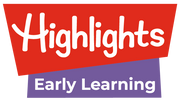From Chaos to Connection: How Kindness Skills Build Harmony in the Preschool Classroom
Preschool classrooms are joyful, noisy, and full of life. And — let’s be honest — they can turn chaotic on a dime. Shoes go missing. Paint gets spilled. Feelings get hurt over block towers and snack swaps. As every preschool teacher knows, when the classroom chorus shifts from laughs to tears, learning can’t take place.
That’s where intentional and consistent kindness learning — and all the relationship, interpersonal, self-awareness, and emotional intelligence skills that come with it — makes a world of difference. It empowers students to navigate their big emotions and even bigger social world.

Here’s how kindness skills turn classroom chaos into connection:
1. Fewer Disruptions, More Learning
One of the biggest daily challenges for early childhood educators is managing behavior. When kids don’t yet have the words or self-regulation skills to express themselves, we see it in their actions: hitting, hiding, yelling, crying, clinging, pushing. These aren’t “bad behaviors” — they’re signals. Signals that a child is overwhelmed, confused, scared, or seeking connection.
Social and emotional development helps children name their emotions, understand them, and express them in safer, more productive ways. And when those skills are practiced daily — through read-alouds, collaborative play, role-playing, or reflection circles — something incredible happens: disruptions decrease, and engagement increases. That’s not just better for kids. It’s a game-changer for educators, too.
2. Routine Meets Resilience
Predictability is a preschooler’s best friend. But routines don’t run on schedules alone — they run on emotional regulation, social awareness, and the ability to manage transitions.
Social and emotional learning gives children the inner tools to do just that. Kids learn what to expect, how to take turns, how to wait, how to recover from disappointment, and how to help a friend in need. This builds classroom routines that aren’t just efficient; they’re emotionally attuned, too. They support children in becoming resilient participants in their own learning journey.
3. Co-Regulation: The Unsung Superpower
If you’ve ever tried to calm a crying child while five others clamor for your attention, you know how vital co-regulation is. It’s the quiet magic that happens when a calm, trusted adult helps a dysregulated child find his or her way back to center. And when social and emotional growth is embedded into the classroom, it becomes easier for both adults and children to access that calm.
Educators become more attuned to early signs of dysregulation. Children begin to recognize what calm feels like — and how to help one another get there. In time, peer-to-peer co-regulation can blossom, with children offering a tissue, a kind word, or an invitation to play. This isn’t just heartwarming — it’s also the beginning of true community.
The Classroom as a Community
Kindness learning isn’t just about individual skills. It’s about building a classroom culture where self-awareness is expected, empathy is modeled, and each child feels heard, safe, and valued. It’s about creating the conditions for all other learning to flow.
Harmony in the preschool classroom doesn’t happen by accident. It’s built, moment by moment, through intentional work that turns chaos into connection. And what better gift can we give our youngest learners than the tools to build a kinder world — starting right in their own classroom?
Is Kindness Connections, our social and emotional enrichment kit, right for you? Speak with one of our experts to learn more!
About the Author

Laureen Reynolds is Highlights Early Learning's Director of Product and a former preschool teacher.

